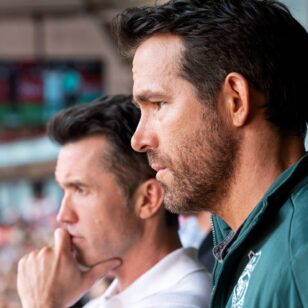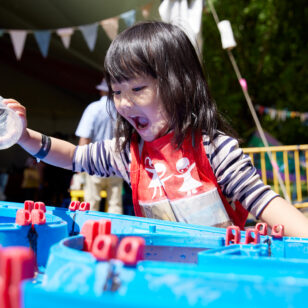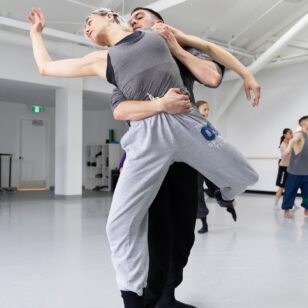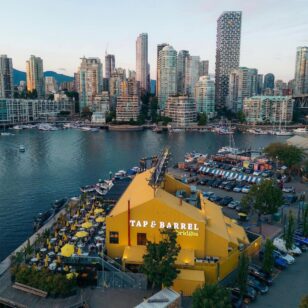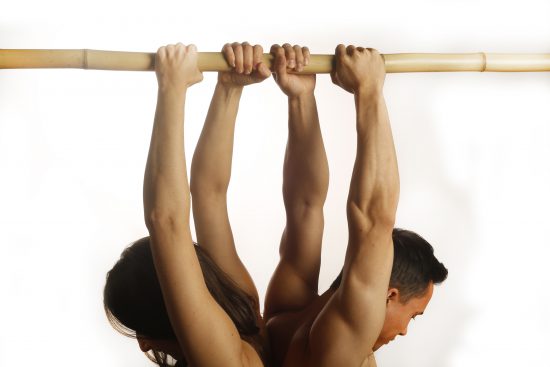
Aeriosa. Tim Matheson photo.
The Dance Centre presents the 11th biennial Dance In Vancouver. A showcase of BC’s contemporary dance scene, it takes place Nov. 22-25 at Scotiabank Dance Centre (677 Davie St.).
Organized every two years, the event provides a unique opportunity to experience some of the West Coast’s most innovative and creative contemporary dancers and choreographers. The 2017 edition features such acclaimed companies as Aeriosa, Co.ERASGA, Inverso, Wen Wei Dance, dumb instrument Dance, Radical System Art, and more.
To get the inside scoop, we talked to Julianne Chapple. A dancer, choreographer, and former artist-in-residence at the Dance Centre, Chapple performs her piece Self Portrait as part of an afternoon program Nov. 25.
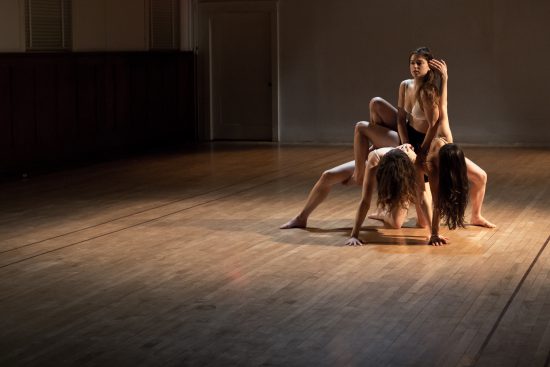
Julianne Chapple, Maxine Chadburn, and Francesa Frewer in Self Portrait. Andi McLeish photo.
Thinking about memory: Julianne Chapple’s Self Portrait
Q: The piece you’re performing, Self Portrait, is described as “a complex and subtle study of identity and female self-image, drawing on depictions of women in art and the relationship with the spectator.” Can you tell us more?
A: This piece was originally inspired by research I was doing around memory, and how it functions. I was interested to learn that, when you remember something, it’s not like that scene has been encoded into a file in your mind. It’s more like each object and person and location has its own kind of file. When you remember a particular scene, your mind is pulling from all of those files to create a collage of the scene in question. So it’s an imperfect process. The more you remember something, the more it’s like a game of telephone with yourself. Details are being changed. And the state you were in at the time is also encoded in your memory. So when you remember it, that’s part of the picture as well.
[perfectpullquote align=”left” cite=”” link=”” color=”” class=”” size=””]When you remember a particular scene, your mind is pulling from all of those files to create a collage of the scene in question.[/perfectpullquote]
Going deeper into that, I started thinking about a person’s sense of self, and how much of that is based on your memories of your past thoughts and actions. If all of that is so imperfect, then what does that say about your own identity?
Q: How do you translate those ideas into a piece on the stage for three dancers?
A: Each of is is acting as an iteration of the same character. Self Portrait started with one of my own memories and that was translated into a movement phrase that we worked with with the three of us, with small changes happening each time. In the piece, you’ll see the first time this phrase happens, it’s one dancer whose body is in contact with the back wall.
Then a small change, like no longer using the wall but using the floor of the wall, creates this huge difference in the movement phrase overall. So I was playing with this idea of the memory degrading over time, and one small mistake changing the way you think about a certain person or event.
Q: Was there anything going on in your personal life that inspired you to start thinking about memory?
A: I was making this piece in residence at EDAM at the Western Front. That studio has been a really important location in the history of the Vancouver dance scene. I felt honoured to make work in this place where so many amazing people have made work in the past 30 years. I was thinking about that, and the memories that the room would have, and how I was feeling connected to the Vancouver dance community in this great way.
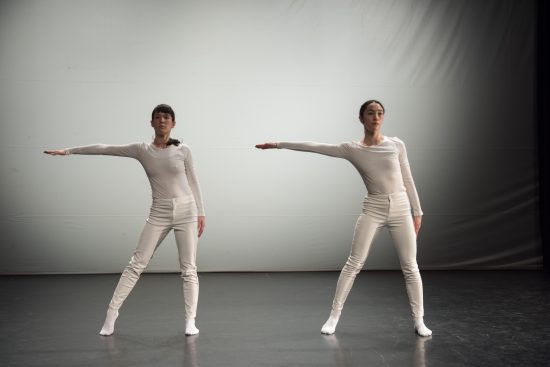
Mahaila Patterson-O’Brien’s 8bitself is part of a Nov. 25 matinee program with Dance in Vancouver. Chris Randle photo.
The things we do for art (and especially contemporary dance)
Q: You’ve created dance for traditional theatre environments as well as art galleries, outdoor sites, and unconventional locations. What is the oddest location?
A: I made a piece in a storefront window at an art gallery. The dancers had to be on this tiny ledge for hours. And they were very kind to indulge me.
Q: We ask a lot of our contemporary dancers, don’t we?
A: Oh yes!
Q: Speaking of which, it seems as though theatre and contemporary dance are increasingly incorporating other media, like film and music. Do you feel that’s necessary to attract a new audience?
A: I’m a big fan of interdisciplinary work. I do some of that myself. Dance can be a great collaborative form, and a lot of people are going in that direction, working with lighting designers and video artists and composers, all coming together to create something.
I also worry that is becoming the expectation for all dance work, and you’ll end up with shows where the majority of the budget has gone to all this external stuff, and the movement itself gets lost in that. So I’m also interested in being able to pare back and give attention to the body itself, and make the choreography the main focus. But it’s great that there’s a variety of things.
Diversity, dance and Vancouver
Q: How important is Dance in Vancouver to contemporary dance in the city?
A: It’s powerful to bring together such a diverse array of companies. When you see them all back-to-back you can see that there’s so much going on. I think sometimes there’s an idea that one style of dance in Vancouver represents this one thing. Having that scope of different practices is really important.
Dance in Vancouver 2017 trailer
Q: What are you looking forward to (friendships and other allegiances aside) at this year’s Dance in Vancouver?
A: Well, there’s a lot of work that I know is great because I’ve already seen it. This is mostly remounts and excerpts that’s already been performed. But I missed Lesley Telford‘s piece (Spooky Action at a Distance (Phase One)) when it happened, so I’m excited to see that.

Lesley Telford. Cara Tench photo.
Hito Steyerl’s video art and Anne Imhof’s ‘bleak S&M-flavored German pavilion’ (artnet.com)
Q: What forms of art do you enjoy when you’re not dancing or thinking about dance?
A: I’m a big fan of contemporary art in different forms. I draw the majority of my inspiration from outside of the dance world.
I’m a big of Hito Steyerl right now. She’s this amazing filmmaker. And I went to the Venice Biennele recently. The German pavilion was the best thing I’ve seen in a while. Anne Imhof performance work (Faust), which is basically a dance work, but because it’s an arts festival, it wasn’t credited that way. But she hired all these dancers and she was able to work with the architecture and add all these structures inside the pavilion. Really amazing.
Julianne Chapple’s Self Portrait is part of a mixed program scheduled for Nov. 25 at 1 p.m. Other pieces in the program include Mahaila Patterson-O’Brien’s 8bitself, Marissa Wong’s Surrendurance and Shay Kuebler’s Feasting on Famine (excerpt).
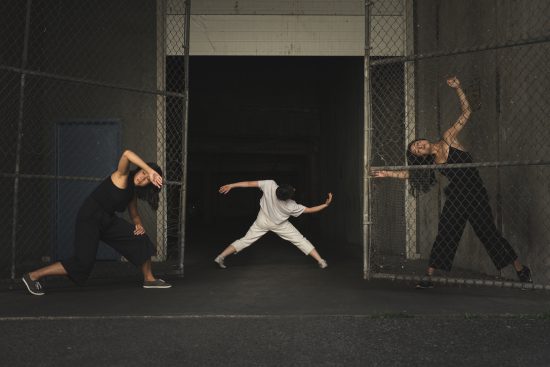
Surrendurance (f. Marissa Wong, Stephanie Cyr, Sarah Formosa) is also part of the program. Luc Roderique photo.
For tickets and info visit thedancecentre.ca.











